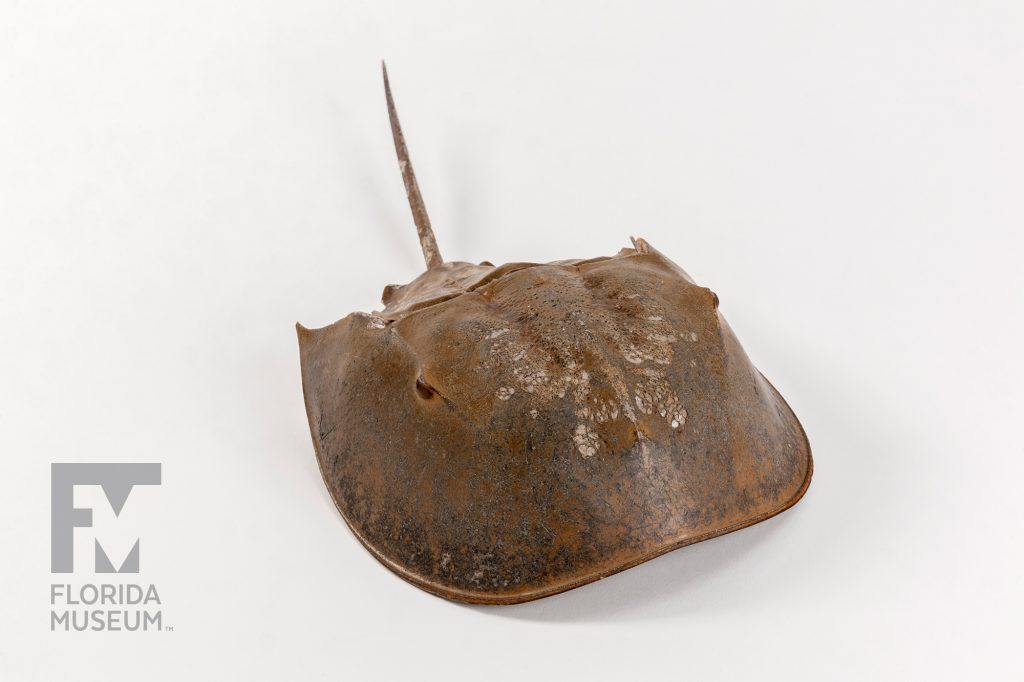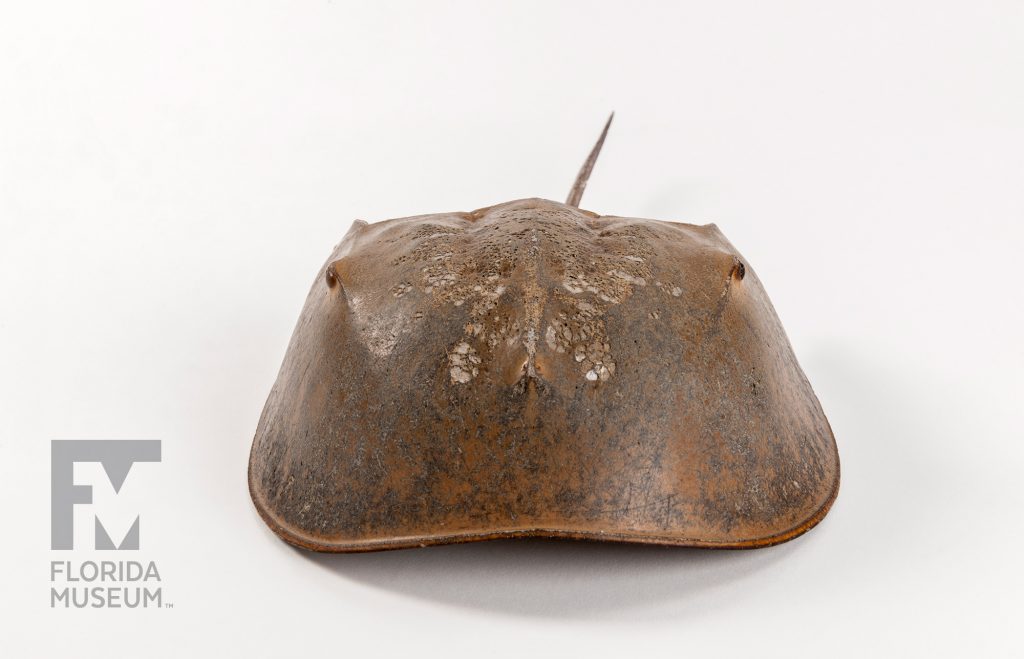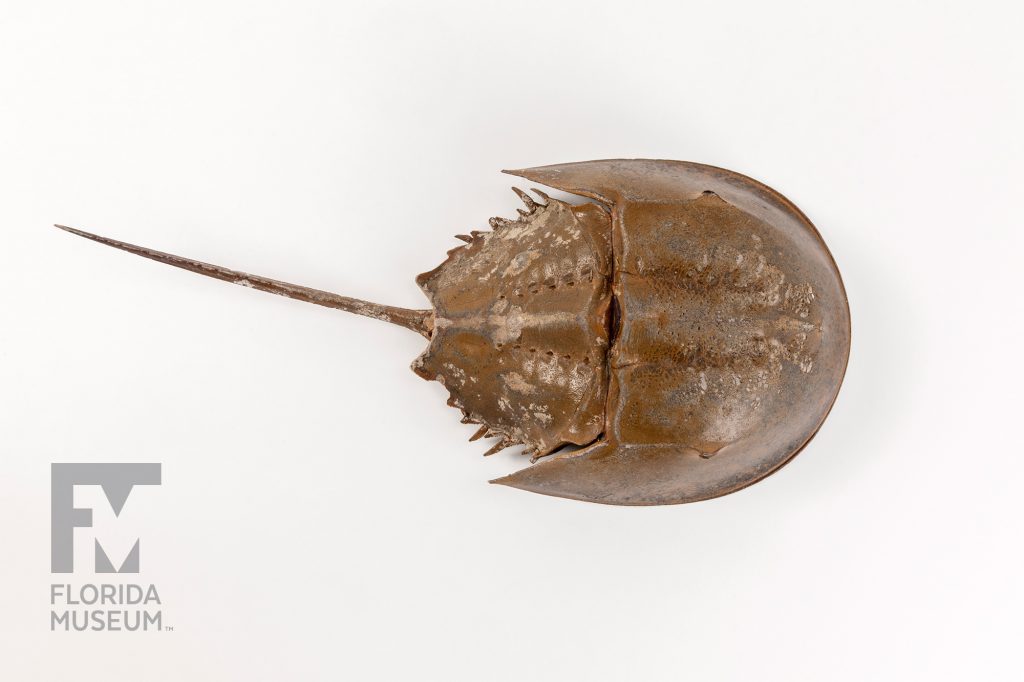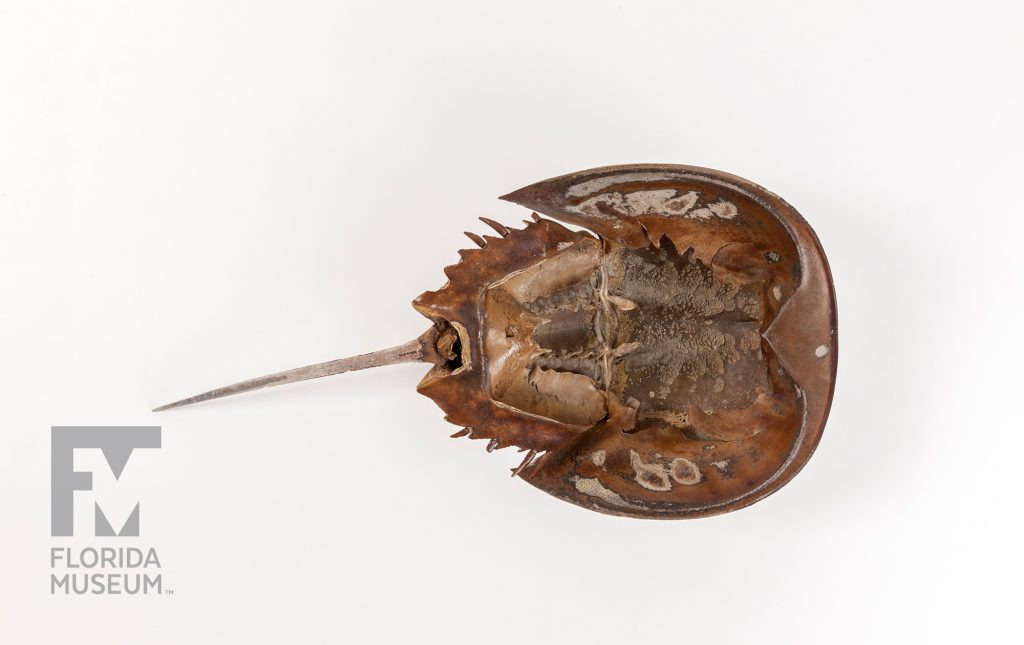Horseshoe Crab blood contains amebocyte cells, which envelop bacteria and prevent them from proliferating. Blood samples from 500,000 crabs are gathered each year to make blood tests that detect bacterial toxins.
Summary
Horseshoe Crab (Limulus polyphemus)
From Cape May Co., New Jersey, Sept. 2001
Collection
Story
Although their common name suggests they are crustaceans, Horseshoe Crabs aren’t really crabs at all; their closest living relatives are actually spiders and scorpions. Horseshoe Crabs are often referred to as “living fossils” because the horseshoe crabs of today look pretty much the same as those that crawled around the ocean floor 480 million years ago.
Horseshoe Crabs are like nothing else on Earth. Among their many unique traits, their blood contains amoebocyte cells, which are similar to the white blood cells of humans. When these amoebocyte cells come into contact with bacterial toxins, they release chemicals that envelop the bacteria in an inescapable gel to prevent them from proliferating. The special ability of these amoebocytes to detect even the slightest amounts of bacterial toxins is used to test for contaminated medical products. Every batch of injectable drugs, surgical implants, or even tools such as scalpels and needles, must pass this Limulus amoebocyte lysate test.
Every year, about 500,000 Horseshoe Crabs are collected from the bays and estuaries of the Mid-Atlantic states to be harvested for their blood. Up to 30 percent of an individual Horseshoe Crab’s blood is drained at a time, after which the animal is returned to the sea. Estimates of mortality caused by this loss of blood vary, but even if the animal is not directly killed from being bled, their activity level and reproductive potential are hindered until they fully recover.
We owe a great debt of gratitude to these ancient and beautiful creatures and should do our best to ensure that they continue to grace the Earth’s stage for another half a billion years.
Patrick Norby
Graduate Student, Invertebrate Zoology*
University of Florida
Exhibit
On display Sept. 23, 2017-Jan. 7, 2018, Rare, Beautiful & Fascinating: 100 Years @FloridaMuseum celebrated the Museum’s rich history. Each Museum collection was asked to contribute its most interesting items and share the stories that make them special. Though the physical exhibit is closed, this companion website remains online, providing an opportunity to experience the Florida Museum’s most treasured specimens.
Exhibit Area: Objects Tell Stories
Theme: Human Health
 Want to see more? Explore more than 300 breathtaking color photos of plants, animals, fossils and cultural heritage materials from the Florida Museum of Natural History’s collections in the award-winning book All Things Beautiful available from the University Press of Florida.
Want to see more? Explore more than 300 breathtaking color photos of plants, animals, fossils and cultural heritage materials from the Florida Museum of Natural History’s collections in the award-winning book All Things Beautiful available from the University Press of Florida.
*This title was accurate at the time the exhibit was on display in 2017. Please visit the collection website to verify current staff and student information.



